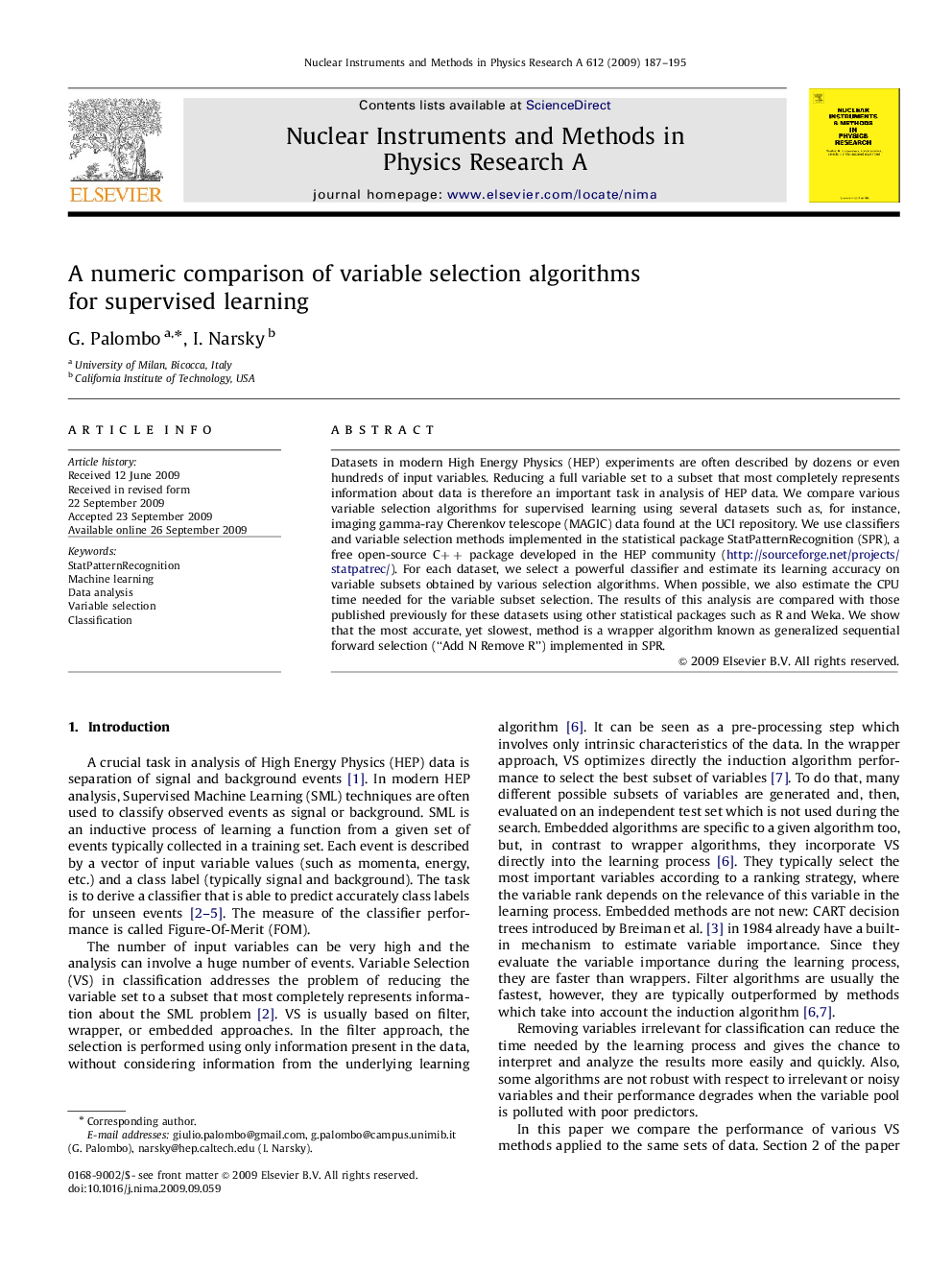| کد مقاله | کد نشریه | سال انتشار | مقاله انگلیسی | نسخه تمام متن |
|---|---|---|---|---|
| 1826439 | 1027382 | 2009 | 9 صفحه PDF | دانلود رایگان |

Datasets in modern High Energy Physics (HEP) experiments are often described by dozens or even hundreds of input variables. Reducing a full variable set to a subset that most completely represents information about data is therefore an important task in analysis of HEP data. We compare various variable selection algorithms for supervised learning using several datasets such as, for instance, imaging gamma-ray Cherenkov telescope (MAGIC) data found at the UCI repository. We use classifiers and variable selection methods implemented in the statistical package StatPatternRecognition (SPR), a free open-source C++C++ package developed in the HEP community (http://sourceforge.net/projects/statpatrec/). For each dataset, we select a powerful classifier and estimate its learning accuracy on variable subsets obtained by various selection algorithms. When possible, we also estimate the CPU time needed for the variable subset selection. The results of this analysis are compared with those published previously for these datasets using other statistical packages such as R and Weka. We show that the most accurate, yet slowest, method is a wrapper algorithm known as generalized sequential forward selection (“Add N Remove R”) implemented in SPR.
Journal: Nuclear Instruments and Methods in Physics Research Section A: Accelerators, Spectrometers, Detectors and Associated Equipment - Volume 612, Issue 1, 21 December 2009, Pages 187–195